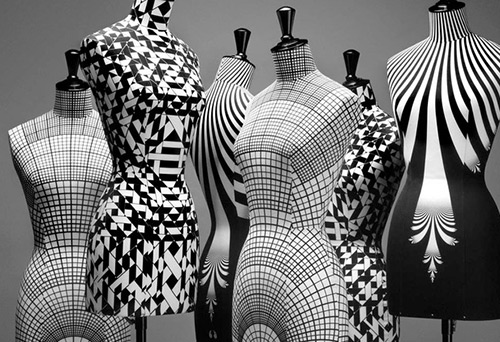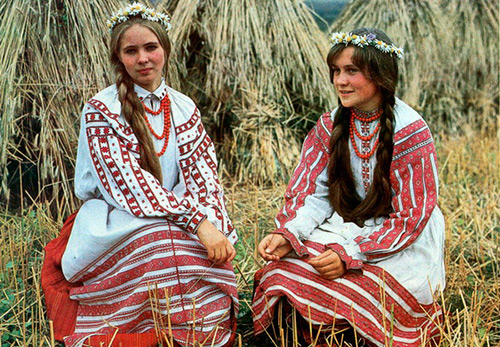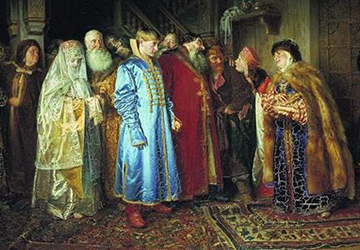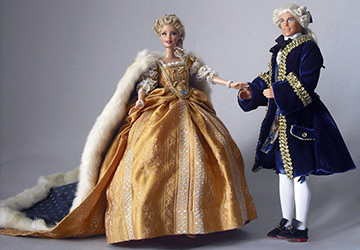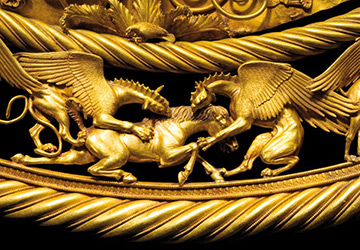Art
Historical costume of the Belarusian gentry
The gentry was the name of the privileged estate in the territory of the Commonwealth. Rzeczpospolita is a state that existed from the 16th to the 18th century and united the Kingdom of Poland and the Grand Duchy of Lithuania. The Rzeczpospolita also included the territories of modern Belarus.
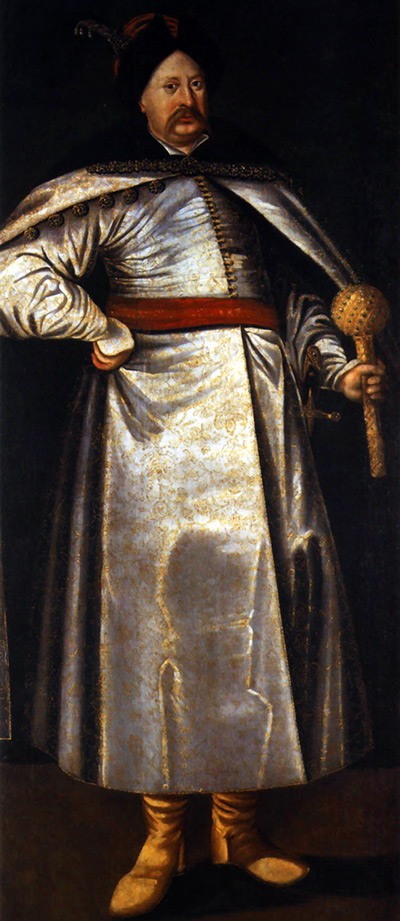
Janusz Radziwill (1612-1655)
Hetman of the Grand Duchy of Lithuania
Portrait around 1654
The gentry can be called the aristocrats of the Commonwealth, and to some extent be compared with the Russian nobility. However, unlike the nobles of the Russian Empire, the gentry had much broader rights. So, it was the gentry on the territory of the Commonwealth that elected the king. At the same time, the gentry class itself was very numerous and varied. Among the gentry there were also very poor people who, like the peasants, themselves worked on the land. But, nevertheless, unlike the peasants, they were free people - they had liberties of the gentry.
Since the gentry was numerous, today many Belarusians, if they begin to study their genealogy, will be able to find representatives of the gentry class among their ancestors.
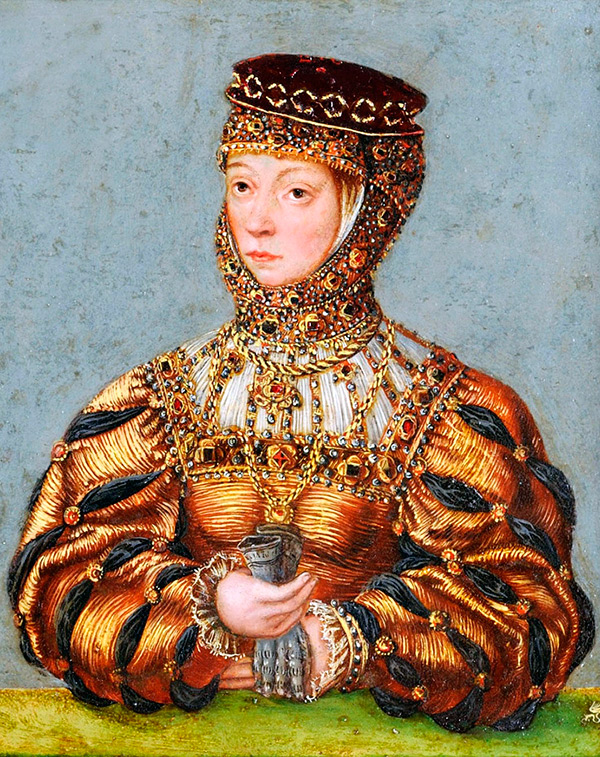
Barbara Radziwill (1520-1555)
The wealthy and influential representatives of the gentry class were called magnates. For example, the Radziwill princes, whose ancestral castle was located in Nesvizh (a city in the Minsk region of Belarus).
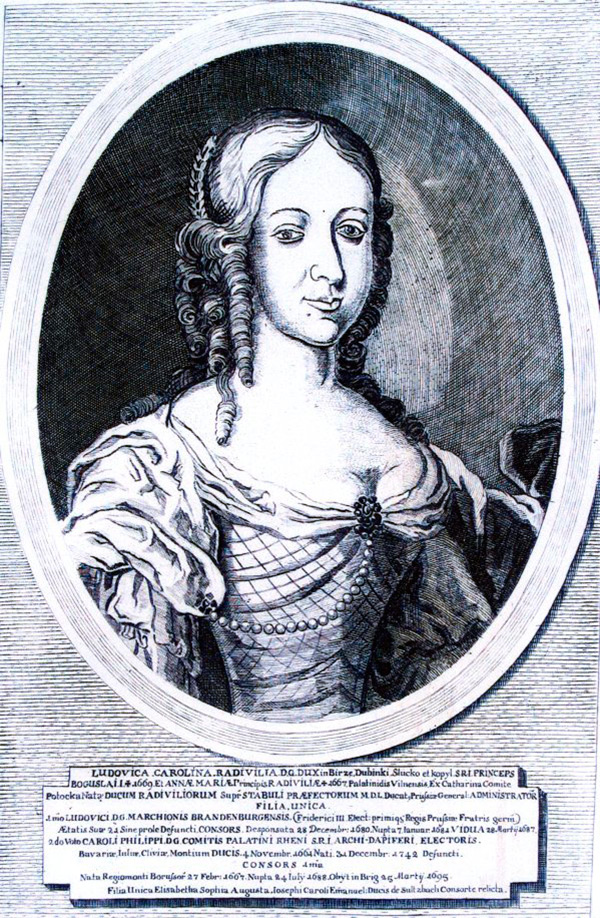
Ludwika Carolina Radziwill (1667 - 1695)
Engraving
Clothes of the gentry in European fashion
The costume of the Belarusian gentry in the 16th-18th centuries was no different from the clothes of European aristocrats. So, in the XVI century in Europe there was a Renaissance and, accordingly, representatives and representatives of the gentry class wore clothes in the fashion of their time. It could be both costumes in the style of the Italian Renaissance, and costumes in German fashion - in the style Northern Renaissance.
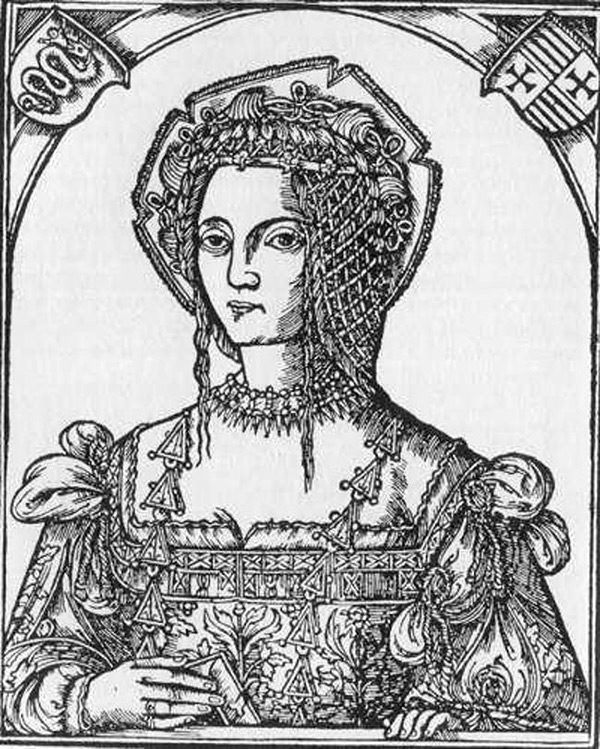
Bona Sforza
Engraving
In the 16th century, the Italian queen Bona Sforza was the Polish queen. It is she who is credited with the introduction of Italian fashion at the royal court of the Polish-Lithuanian Commonwealth.
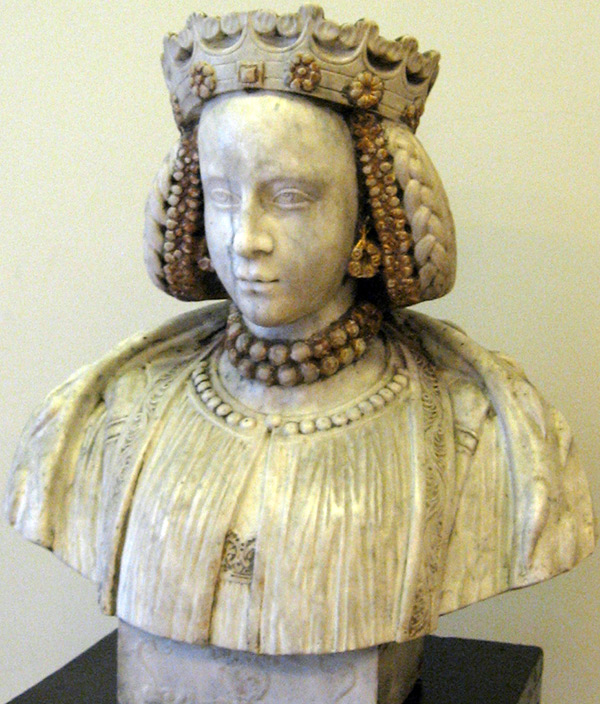
16th century bust of Barbara Radziwill
Bona Sforza was famous for her beauty and her love of poisons. It is with the name of Bona Sforza that the story of the poisoning of Barbara Radziwill is connected. The son of Queen Bona Sigismund August fell in love with the representative of the magnate family of the Radziwills Barbara. His mother, Queen Bona Sforza, was against their marriage. Perhaps due to the fact that she feared an increase in the influence of the Radziwill princes on her son. As a result, after the wedding, Barbara Radziwill died of a strange illness. Most likely, she was poisoned. Sigismund Augustus remained with his beloved until the last. And after the death of Barbara Radziwill, his relationship with his mother was very tense.
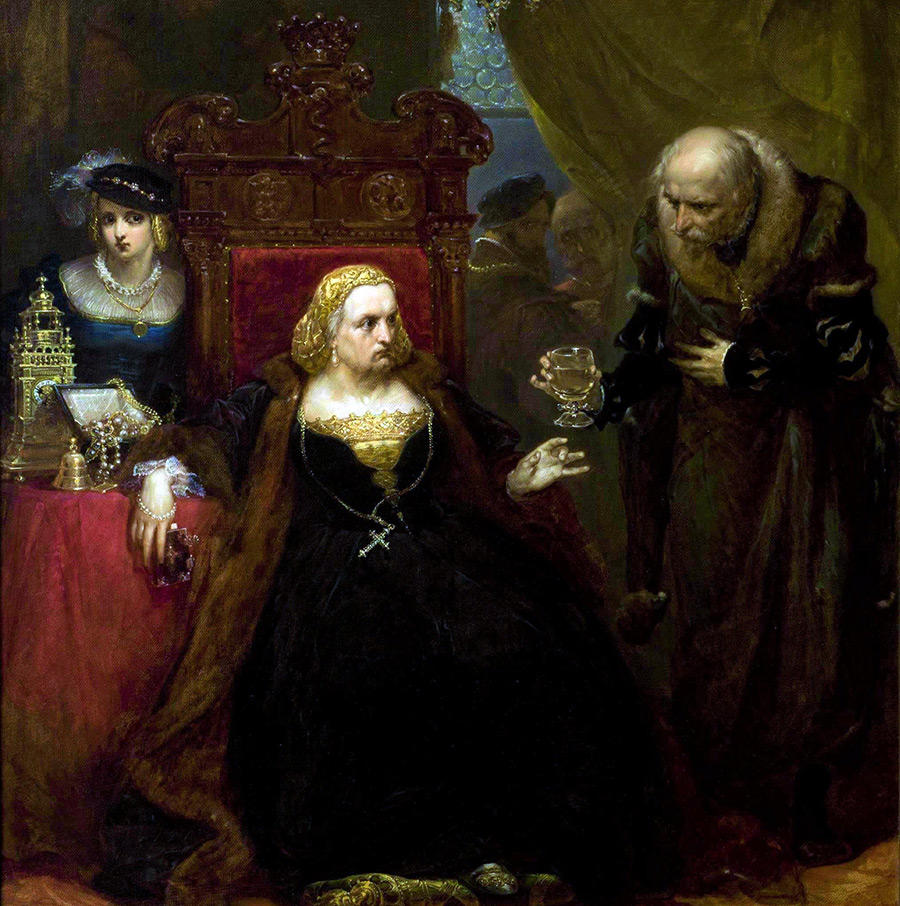
Queen Bona poisoning
Painter Jan Matejko, painting 1859
Bona Sforza eventually returned to Italy, where she died. There is a version that Queen Bona died not by her own death. She was poisoned by her own physician Papagodi, who is considered by some historians to be an agent of the powerful royal family of the Habsburgs.
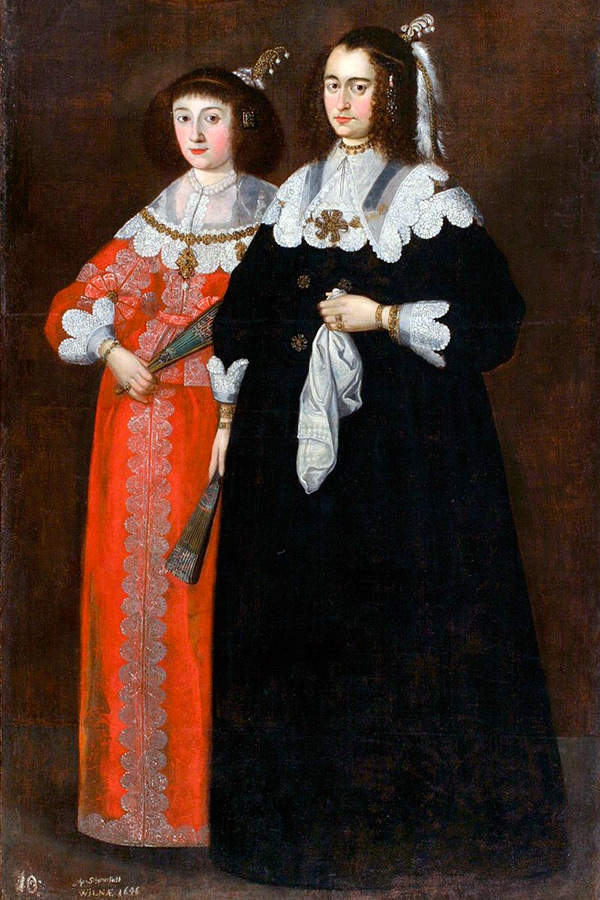
Katarzyna from Pototskikh and Maria Lupu, daughter of the Moldovan ruler Vasily Lupu. The first and second (from 1645) wives of Janusz Radziwill (1612-1655)
Artist Johann Schroeter
Dressed in baroque fashion
In the 17th century, Europe is dominated by another style - baroque... And the Belarusian gentry also wears a suit in this style. Moreover, both in Spanish and, a little later, and in French fashion. In the 18th century, the time of the Rococo style comes.
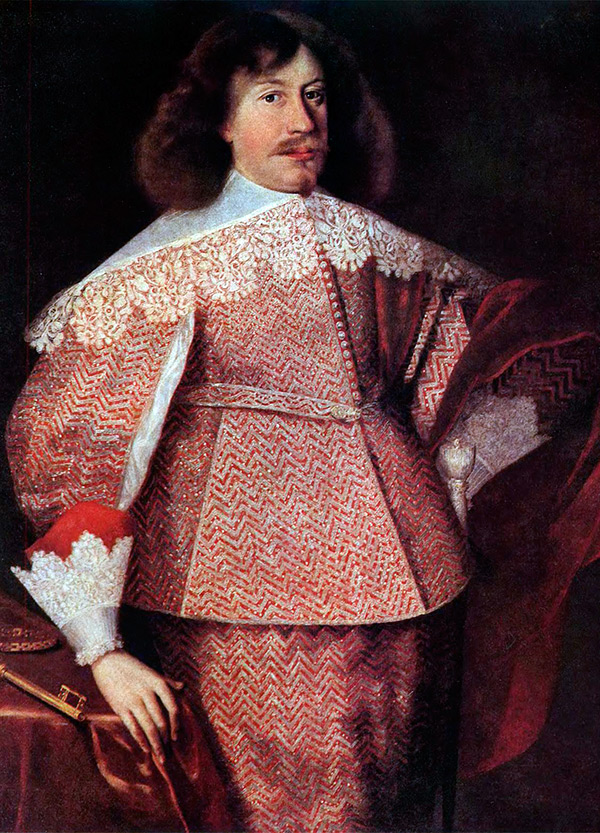
Janusz Radzwill (1612-1655)
Portrait of the 1630s
Dressed in baroque fashion

Albrecht Stanislav Radziwill
Portrait of 1640
Dressed in baroque fashion
However, the costume of the Belarusian gentry had its own local flavor. Local features manifested themselves only in the men's suit.Thus, a Belarusian nobleman of the 16th-18th centuries could dress both in European fashion and in a noble costume.
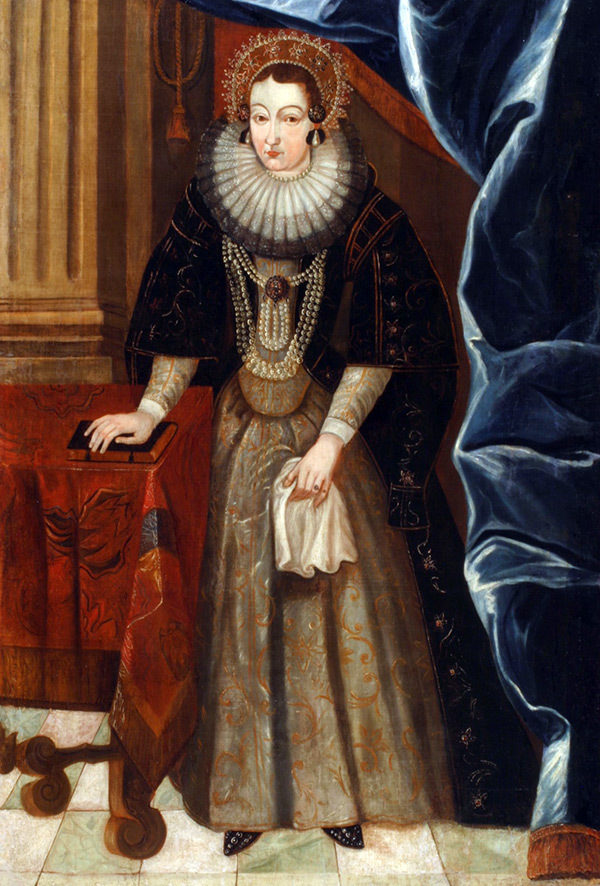
Portrait of Griselda Sapega. 1630s
Dressed in Spanish fashion from the early 17th century
Jan Stanislav Sapega's wife -
representative of the influential magnate family Sapieha
The ruins of the Sapieha Palace can be seen
in the Belarusian village of Ruzhany (Brest region)
Zhupan
In the 16th century, representatives of the gentry, as well as townspeople, over their undershirts could wear zhupan - clothes made of cloth or silk, expanding downward from the waist line. The zhupan was fastened with buttons or hooks. Most often, jupans of red, yellow and blue colors were worn. In winter, they could wear a zupan with a fur lining. Until the 17th century, the zhupan was girded.
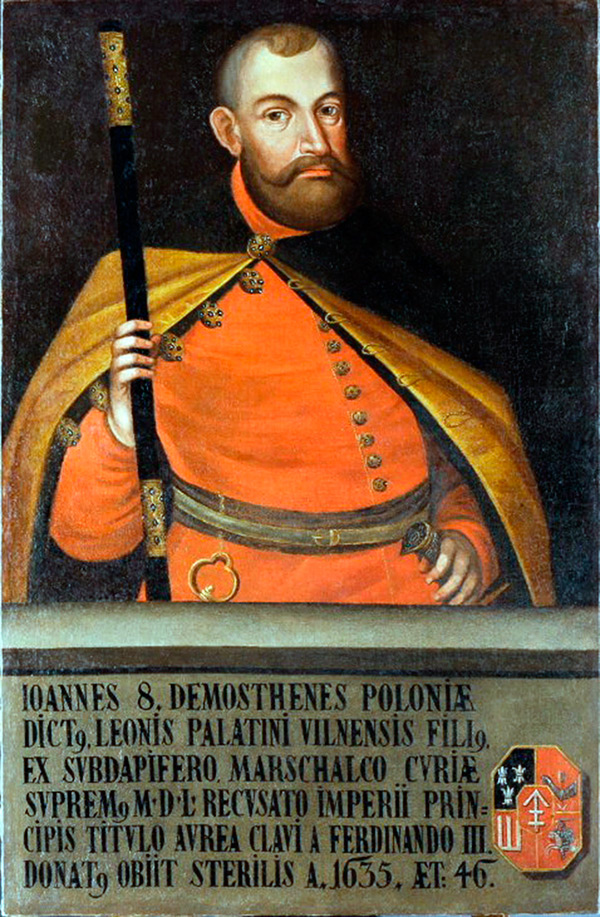
Portrait of Jan Stanislav Sapega (1589-1635)
Dressed in zupan and delia
Since the 17th century, kuntush is worn over the zupan, and the belt is moved to the kuntush.
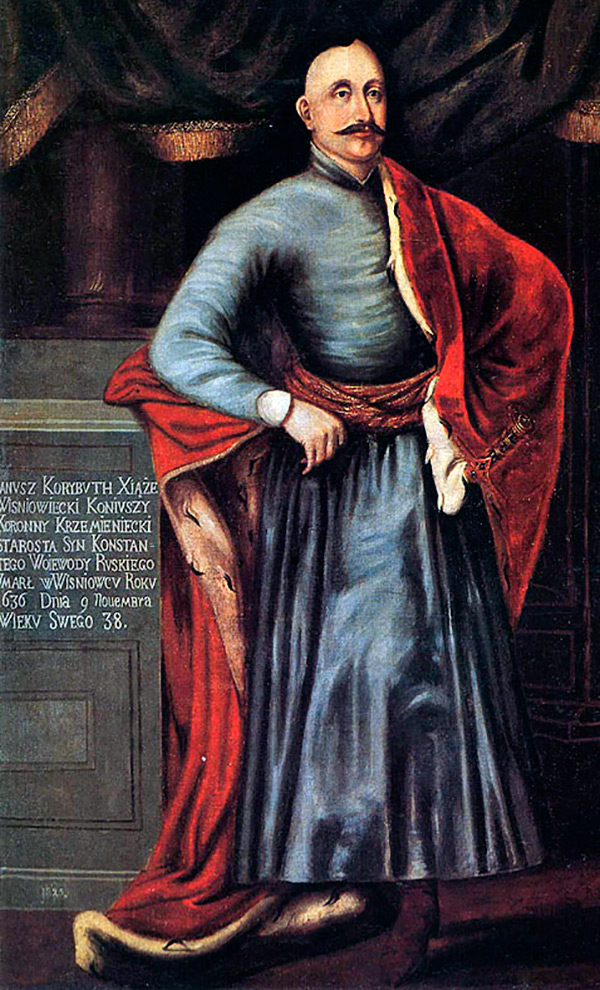
Portrait of Janusz Vishnevetsky. 17th century
Kuntush
Kuntush is clothes that came to the territory of the Commonwealth from Hungary... Perhaps in the second half of the 16th century, at a time when the king of Hungary, Stephen Batory, was on the Polish throne.
The Hungarians, in turn, borrowed the kuntush from the Turks. However, those kuntushi worn in the 17th-18th centuries on the territory of the Polish-Lithuanian Commonwealth differed in their cut from the Turkish ones.
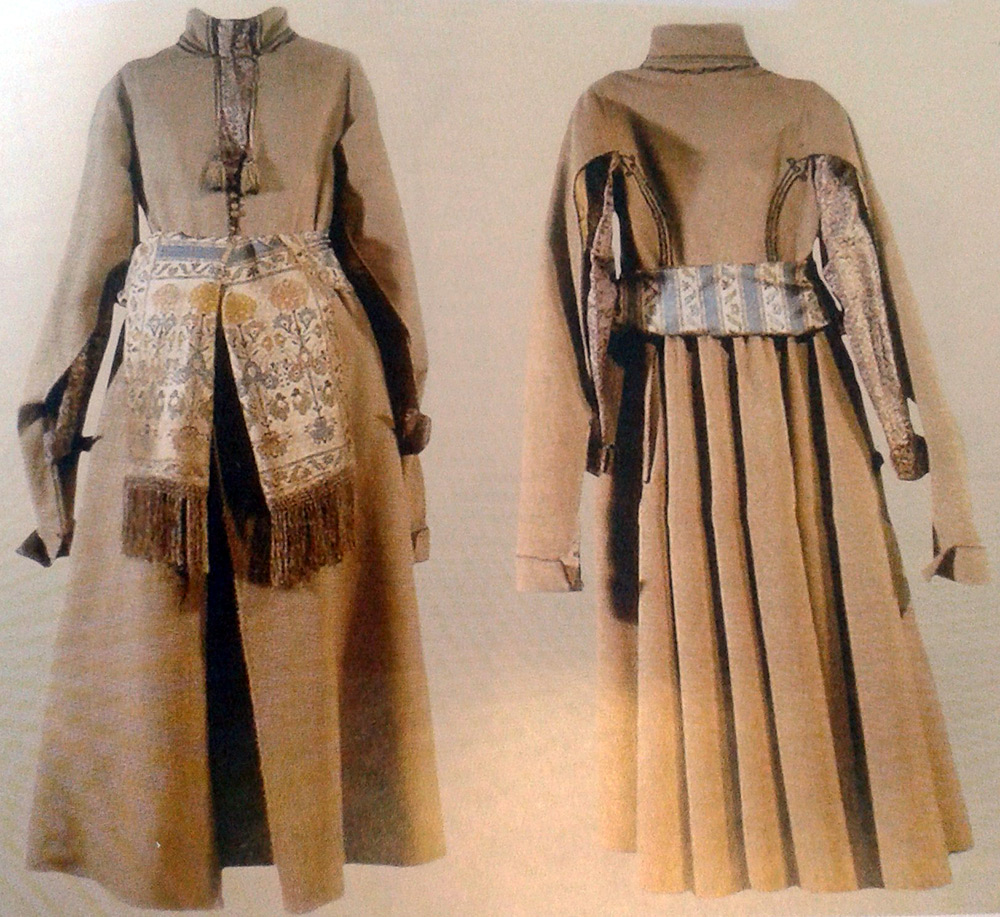
Kuntush with a belt
Kuntush in the Commonwealth was necessarily worn over a zupan and belted. The kuntush was fastened at the waist with buttons or hooks. The long folding sleeves of the kuntush were cut to the shoulder. Such sleeves could be worn over the shoulders. Sometimes kuntush was worn only on one sleeve. They sewed kuntushi from cloth, silk, velvet.
Delia
Another type of clothing worn by the Belarusian gentry was delia. Delia was most often worn with a zhupan in the 16th-17th centuries. Delia is a kind of cloak that was thrown over the shoulders. Delia was the dress worn by the magnates and the king at ceremonial exits, embassy receptions, during the sitting of the Diet. That is, a delia is a formal dress that reflects the status of the person who wore it. Delia could also be adorned with a wide fur collar.
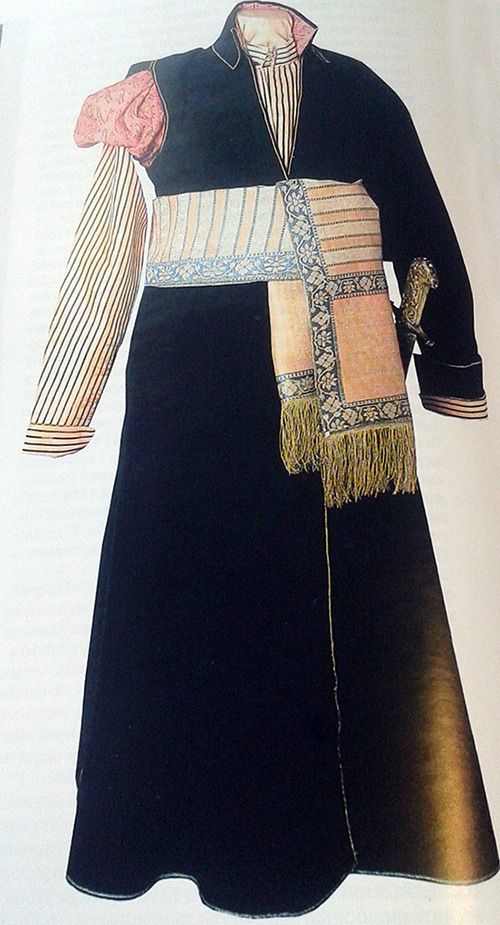
Kuntush with a belt
A belt was an obligatory element of the costume of the Belarusian gentry, and of the Polish gentry as a whole. The most famous belts of that time are Slutsk.
Slutsk belts
The production of belts began in the 1750s at a manufactory founded in the Belarusian city of Slutsk. Hence the name - Slutsk belts. The manufactory belonged to the princes Radziwills, and the founder of the manufactory is considered to be Prince Mikhail Kazimir Radziwill.
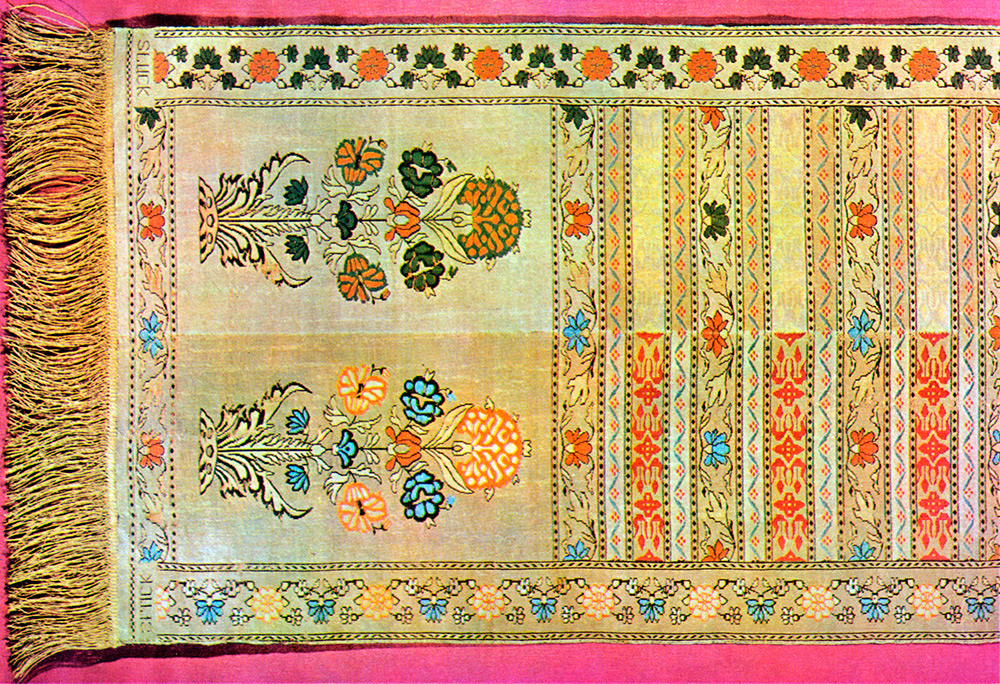
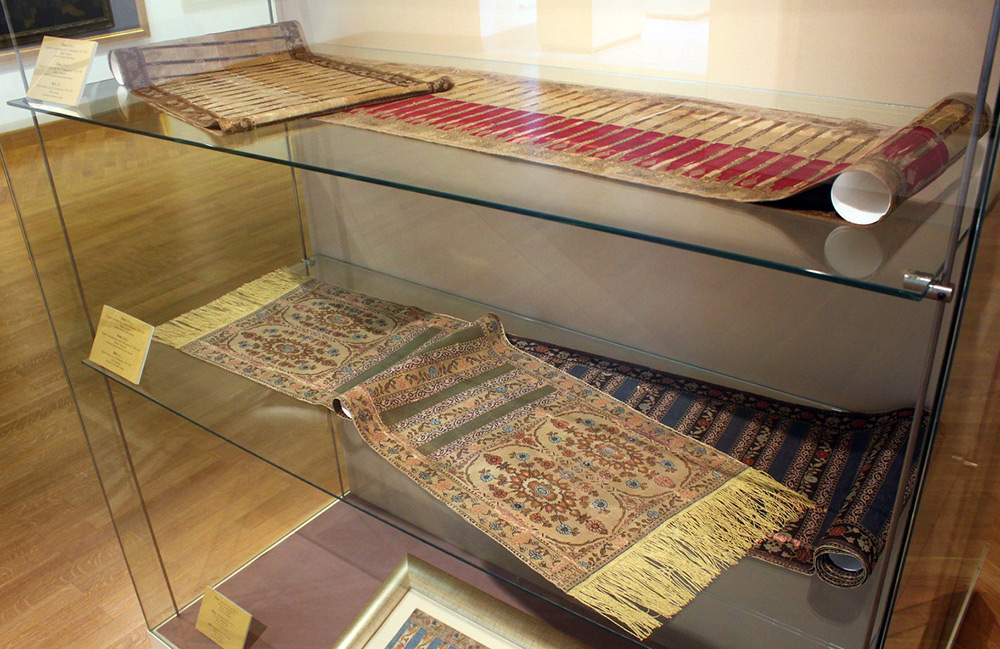
Slutsk belt of the 18th century
Initially, belts were brought to the territory of the Commonwealth from the countries of the East, including Persia (modern Iran). Therefore, the belt manufacturing factories also began to be called "persiarnae". In addition to Slutsk, manufactories were opened in some other cities.
Slutsk belts were woven from fine silk, silver and gold threads. Their drawing combined oriental patterns with local motives. For example, a cornflower flower could be embroidered on Slutsk belts. The width of the belts was 30-50 cm, and the length was from 2 to 4.5 meters. The belts were double-sided, that is, frontal on both sides. Thus, Slutsk belts could be worn on either side. The ends of the belts were sometimes trimmed with fringes.
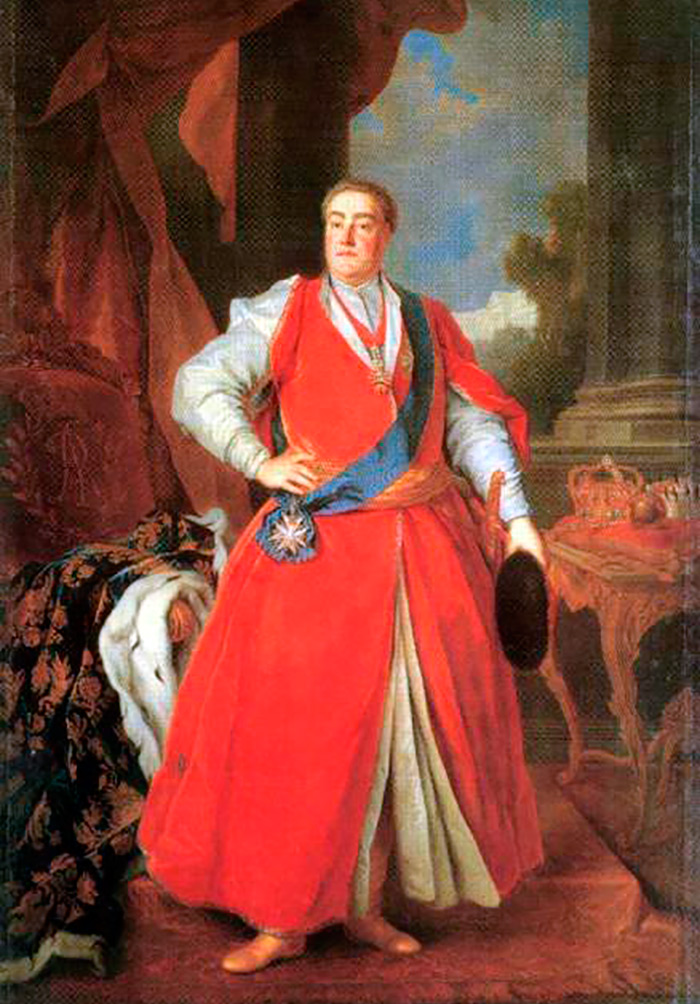
Portrait of the King of the Polish-Lithuanian Commonwealth August III (1696-1763)
Kuntush with fold-over sleeves and belt
The manufacture in Slutsk existed until 1848, that is, until the first half of the 19th century. In the 19th century, the Belarusian lands were already part of the Russian Empire. During this period, belts fell out of fashion. Gentlemen's costume, as well as the gentry class itself, remained in the past.
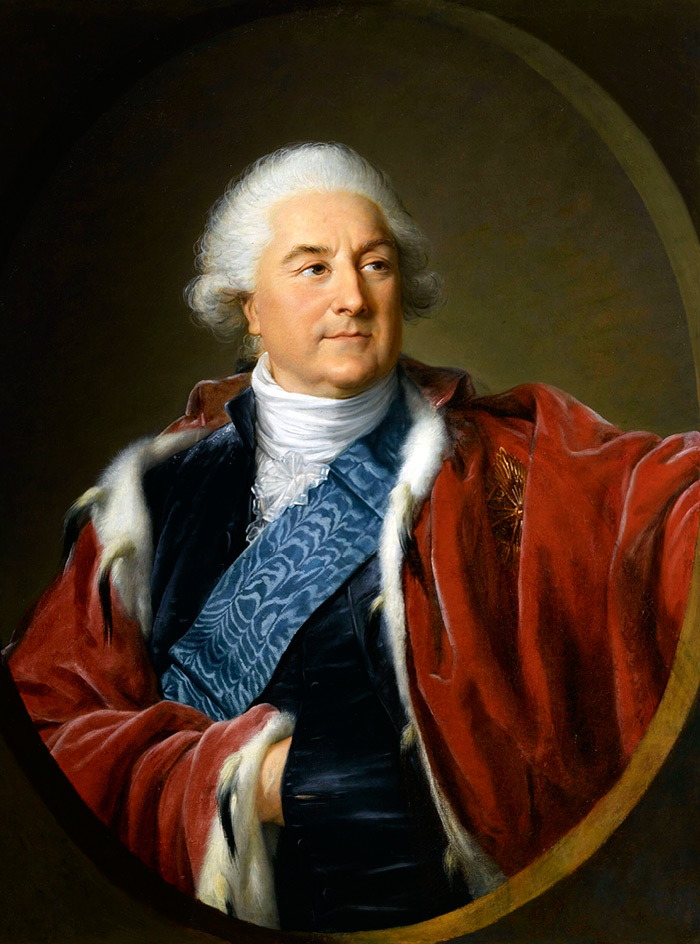
Stanislav August Poniatovsky (1732 - 1789)
The last king of the Commonwealth
V Russian Empire there could not be as many nobles as there were nobles in the Commonwealth. Having annexed the Belarusian lands, Catherine II began the so-called process of parsing the gentry. The poorest representatives of the gentry class were equated with peasants and deprived of their liberties. As for the magnates, all their rights and possessions were retained for them.
Comments and Reviews
Add a comment
Rating news
Shades of clothing that make women look younger
What shades of hair make women younger: rules and photos
Funny wedding dresses - photos and ideas
12 most expensive down jackets for the winter
How to look 25 at 40: tips from supermodels
Beautiful schoolgirls
Anti-aging haircuts and hairstyles for women
Fashionable skirts for autumn and winter
Fashionable women's trousers for the cold season
Fashionable and stylish sandals for summer 2024
Spring-summer 2024
 Fashionable dresses and tops with thin spaghetti straps
Fashionable dresses and tops with thin spaghetti straps
 Bandana tops: how to wear stylishly and beautifully
Bandana tops: how to wear stylishly and beautifully
 How to put together the perfect men's wardrobe for the summer
How to put together the perfect men's wardrobe for the summer
 Trendy shorts for spring-summer 2024
Trendy shorts for spring-summer 2024
 Fashionable skirts for spring-summer 2024: a guide to online shopping
Fashionable skirts for spring-summer 2024: a guide to online shopping
 The most fashionable dresses spring-summer 2024: styles and colors
The most fashionable dresses spring-summer 2024: styles and colors
 Fashionable total look 2024: image ideas and trends
Fashionable total look 2024: image ideas and trends
